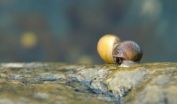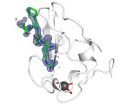Over-the-top grass control in sorghum on the horizon
AgriLife Research and seed companies working on solution
2010-09-13
(Press-News.org) AMARILLO - Apply today's chemicals to a sorghum crop for grass control and the sorghum will be killed off also. But a solution could be only a few years away if Texas AgriLife Research plots are any indication.
Dr. Brent Bean, AgriLife Research and Texas AgriLife Extension Service agronomist, has test plots that demonstrate sorghum hybrids tolerant to herbicides typically associated with grass control.
The control is needed not only for annual grass control but also for Johnsongrass, Bean said. Because Johnsongrass is closely related to grain sorghum, herbicides typically used in crops such as cotton and corn cannot be used in sorghum.
A solution might be found with two sorghum hybrids originating from germplasm developed in the Kansas State University sorghum breeding program about five or six years ago. The germplasm development was funded by the National Grain Sorghum Producers Board and the United Sorghum Checkoff Program.
The germplasm is now being developed into commercial hybrids by Pioneer Seed Co. and other seed companies, Bean said. Products labeled for use in these herbicide-tolerant hybrids will come from DuPont.
"There's a group of herbicides called ACCase herbicides," he told a group of producers at a recent field day. "You are familiar with those in herbicides like Fusilade, Poast, Select, Assure II and Fusion. They've been around a number of years and are used primarily for grass control in soybeans and cotton.
"You are also familiar with ALS herbicides typically used in corn, such as Resolve, Accent and Basis," Bean said. "The tolerant hybrids being developed will eventually be tolerant to both classes of herbicides."
What will be labeled for the ACCase-tolerant sorghum is Assure II, he said. There are actually two classes in the ACCase herbicide family, so not all of them will work. Bean has a plot of ACCase-tolerant sorghum that he sprayed with Select and it killed the sorghum.
"One will kill the sorghum, so Assure2 is what you want to use. With the other group of sorghums, they are going to be SU-tolerant for those herbicides.
Jack Lyons of Amarillo, with DuPont, said what the company is looking to do is "supply some post-emerge grass control in sorghum -- something that has been missing for a long time, especially for dryland farmers."
The seed companies are dealing with two traits which are being brought forward in the development phase individually. The ALS trait is going to be called Inzenz and the Assure II trait will be called InzenzAII, and eventually they will be stacked together.
The ALS herbicide will have three active ingredients -- nicosulfuron, familiar to producers in the product Accent; rimsulfuron (Resolve and Steadfast) and metsulfuron, commonly known as Ally, which is now primarily used in wheat, Lyons said.
How these three active ingredients will be mixed together is still being determined, Bean said. His AgriLife Research studies will help determine the final product to be marketed by DuPont.
This year, Bean has two trials out comparing the effectiveness of various combinations of these three active ingredients, along with other herbicides currently labeled for use in sorghum.
He said the results look very promising with good grass control being achieved, although it appears application timing will be important. Other trials are being planned for next year in farmer's fields.
The two classes of herbicides will provide two different modes of action to control grass, Bean said. This will help prevent weed resistance to the herbicides from developing.
The ACCase-tolerant hybrids will be tolerant to those herbicides commonly referred to as "fobs," products like Assure II; and that was done with some forethought, Lyons said.
"That will leave us with the 'dims,' products like Select, where we will have a tool to control volunteer sorghum in a crop rotation program or if we develop some resistance," he said.
The big question is when these traits might be available in seed, Bean said.
Lyons said he expected quantities sufficient for larger demonstrations in 2012 and then for commercial production in 2013.
INFORMATION:
END
ELSE PRESS RELEASES FROM THIS DATE:
2010-09-13
Athens, Ga. - A new University of Georgia study has found that select varieties of sorghum bran have greater antioxidant and anti-inflammatory properties than well-known foods such as blueberries and pomegranates.
Researchers measured polyphenolic compounds, which naturally occur in plants to help fight against pests and disease, and found that the black and sumac varieties of sorghum have significant levels of antioxidants. Many fruits also contain these compounds, they said, though sorghum bran may prove to be the richest and cheapest source.
"Since most human chronic ...
2010-09-13
David H. Adams, MD, Marie-Josée and Henry R. Kravis Professor and Chairman of the Department of Cardiothoracic Surgery at The Mount Sinai Medical Center, has performed the first implantation of the Medtronic Tri-Ad Semi-Flexible Tricuspid Annuloplasty Ring in the United States. Dr. Adams invented the ring, which was recently approved by the Food and Drug Administration.
The tricuspid valve lies between the right atrium and right ventricle of the heart. Tricuspid valve regurgitation occurs when the valve does not close completely and blood leaks back into the right atrium ...
2010-09-13
A group of children who underwent fusion surgery for spondylolisthesis in the lumbar spine 30 years ago showed a clear reduction in back pain when followed up seven years later. A new study of these patients as adults has found that the benefits have lasted, reveals research from the Sahlgrenska Academy and Sahlgrenska University Hospital presented this week at the International Society of Orthopaedic Surgery and Traumatology (SICOT) annual international conference in Gothenburg.
Spondylolisthesis (forward displacement of a vertebra) in the lumbar spine occurs in 6% ...
2010-09-13
Today sees the presentation of a study that, for the first time, shows the results of treatment using prostheses attached to titanium implants in the bones of patients with above-the-knee amputations. It reveals that the treatment improves function and quality of life in nine out of ten patients, and is the result of research carried out at the Sahlgrenska Academy and Sahlgrenska University Hospital that is being presented this week at the International Society of Orthopaedic Surgery and Traumatology (SICOT) annual international conference in Gothenburg.
At a symposium ...
2010-09-13
Early childhood education can play a key role in relation to change when the world fails to adopt a sustainable approach economically, ecologically and socially.
This was highlighted at the World Congress "Children, citizens in a challenged world", which was hosted by the University of Gothenburg.
In a statement, the congress urges governments around the world to protect children's right to a childhood.
More and more people are realising that work with young children is a force for change in itself, towards creating a different society. Early childhood education has ...
2010-09-13
Sexual conflict is not only a human phenomenon. Scientists at the University of Gothenburg have shown that females of the rough periwinkle conceal their gender identity in order to avoid excessive copulation.
The females of most species of snail excrete a substance in their mucous trails that enables males to find them more easily, since they can distinguish between trails from females and those from other males. The males follow the mucous trails laid down by females in order to find a partner for mating. However, the females of one of the species studied (Littorina ...
2010-09-13
VIDEO:
This video shows UBR-box recognition of an arginine residue at the beginning of a protein (blue) targeted for degradation. The structural integrity of the UBR box depends on zinc (grey)...
Click here for more information.
Our bodies recycle proteins, the fundamental building blocks that enable cell growth and development. Proteins are made up of a chain of amino acids, and scientists have known since the 1980s that first one in the chain determines the lifetime ...
2010-09-13
The new Premier League season has begun and in Madrid the World Cup celebrations are barely over, yet according to research in WIREs Cognitive Science the world's best players may soon be facing a new challenge from football playing robots, which their creators claim will be able to play and beat a human team. The research reveals how building robots to play football is driving the development of artificial intelligence and robotic technology which can be used for roles including search and rescue and home help.
The author, Claude Sammut, from the ARC Centre of Excellence ...
2010-09-13
New findings from a major drug trial have brought experts a step closer to developing a drug which could prevent thousands of British deaths from heart attacks.
Dr Robert Storey, Reader at the University of Sheffield and Consultant Cardiologist at Sheffield Teaching Hospitals, was the UK lead for international trials of a new drug, ticagrelor, which have been taking place over the last six years.
The new findings from one of these studies, the ONSET/OFFSET study, revealed that the platelet function in patients taking ticagrelor recovered much quicker after the drug ...
2010-09-13
Stroke patients who were left partially paralysed found that their condition improved after they received a simple and non-invasive method of brain stimulation, according to research in the September issue of the European Journal of Neurology.
Researchers from the Ain Shams University in Cairo, Egypt, studied 60 patients with ischaemic stroke - where the blood supply is reduced to the brain - who had been left with mild to moderate muscle weakness down one side of their body.
Twenty of the randomly assigned treatment group received repetitive transcranial magnetic ...
LAST 30 PRESS RELEASES:
[Press-News.org] Over-the-top grass control in sorghum on the horizon
AgriLife Research and seed companies working on solution



